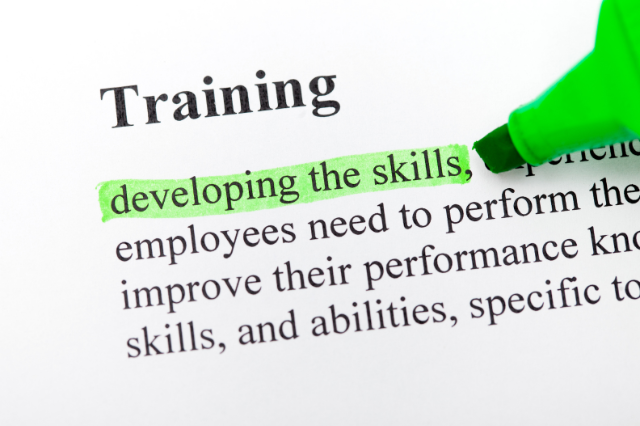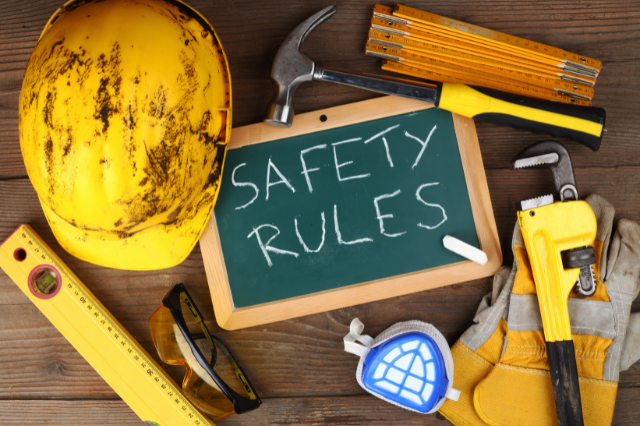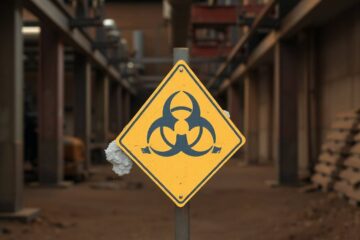Safety is a paramount concern for businesses in every industry. A well-trained workforce is a critical component of maintaining a safe workplace. In this blog post, we’ll explore the top 10 safety training courses that businesses should consider investing in for their teams. These courses are designed to enhance employees’ safety knowledge, reduce workplace accidents, and ensure compliance with safety regulations. Whether you’re in manufacturing, construction, healthcare, or any other sector, these training courses offer valuable insights to protect your employees and your business.
Why is safety training important?
Safety training is crucial for protecting employees from workplace hazards, reducing the risk of accidents and injuries, and increasing productivity. It also helps companies comply with safety regulations and avoid costly penalties. Moreover, regular safety training creates a culture of safety in the workplace, where employees are aware of potential hazards and take proactive measures to prevent them.

What are the benefits of safety training?
- Reduced workplace accidents and injuries: Employees who receive proper safety training are more aware of potential hazards and know how to avoid them, leading to a decrease in workplace accidents and injuries.
- Compliance with safety regulations: Safety training ensures that businesses comply with local, state, and federal safety regulations, avoiding penalties and legal consequences.
- Increased productivity: When employees feel safe and confident in their workplace, they are more likely to be productive. Safety training also teaches them how to use equipment properly, reducing downtime due to accidents or mistakes.
- Enhanced employee morale: A safe working environment boosts employees’ morale and job satisfaction, leading to higher retention rates and a positive work culture.
- Cost savings: By investing in safety training, businesses can avoid costly accidents, injuries, and legal fees.
How should I choose the best training provider?
When choosing a safety training provider, there are several factors to consider, such as:
- Accreditation and certifications: Look for training providers that are accredited by relevant organisations or have certified trainers. This ensures that the training is of high quality and meets industry standards.
- Course content: The training courses should cover all necessary topics and be tailored to your specific industry and workplace hazards.
- Delivery methods: Consider the delivery methods, such as in-person or online training, and choose the one that best suits your team’s needs.
- Reviews and testimonials: Read reviews and testimonials from other businesses who have used their services to get an idea of their reputation and effectiveness.

How do I choose which employees should receive specific safety training?
All employees should receive some form of general safety training to ensure a baseline knowledge of workplace hazards and safety procedures. However, specific job roles or responsibilities may require additional specialised training.
When selecting employees for specialised safety training courses, consider the following factors:
- Job duties: Identify which job roles involve higher risks or exposure to particular hazards and prioritise those employees for specialised training.
- Previous training: Take into account any previous safety training employees may have received to avoid duplicating efforts.
- Performance: Consider employees’ past performance in terms of safety compliance and whether they may benefit from additional training.
Are safety training courses a tax deduction?
We are safety experts, not accountants but our understanding is that safety training courses can be tax-deductible. As with any tax deductions, it’s crucial to consult a professional accountant or check with your local laws for specific guidelines.
You may even be eligible for a rebate from the NSW Government through the NSW Small Business Rebate Program.
How often should safety training be completed?
Safety training courses should be completed regularly as a refresher and to ensure employees are up to date on any new safety regulations or procedures. The frequency of training may vary depending on your industry, but it’s generally recommended to have annual safety training for all employees. However, certain job roles or high-risk industries may require more frequent training.
And depending on what course or certificate was completed, additional training may be required to maintain that certification.

Safety Training Courses
Here our our picks for the top 10 safety training courses employees should be doing for 2024.
1. Workplace Hazard Identification and Risk Assessment
This course is designed to equip employees with the fundamental skills needed to identify workplace hazards, assess the associated risks, and take proactive measures to mitigate these risks effectively. It fosters a safety-conscious mindset among employees, encouraging them to become vigilant observers of their work environment. By recognising potential hazards and understanding the risks they pose, employees can contribute to a safer workplace. Furthermore, this training often offers specialised versions tailored for different industries, such as construction or healthcare, ensuring that the content remains industry-relevant and applicable to specific workplace contexts.
2. First Aid and CPR Training
First Aid and CPR Training is an indispensable component of workplace safety. This course goes beyond basic first aid by teaching employees how to provide crucial assistance in medical emergencies. Participants learn essential life-saving skills, including CPR techniques, wound care, and how to respond to incidents such as choking or cardiac arrest. With this training, employees become confident and capable first responders, ready to provide immediate aid when it matters most. First aid and CPR skills are not only valuable within the workplace but also in everyday life.
3. Fire Safety and Evacuation Procedures
Fire Safety and Evacuation Procedures training is a cornerstone of workplace safety. In this course, employees learn the principles of fire prevention, including identifying fire hazards, maintaining fire safety equipment, and using fire extinguishers effectively. Additionally, participants are educated on safe evacuation procedures, ensuring that they can exit the workplace safely in the event of a fire or other emergencies. This training instils the knowledge and confidence needed to respond swiftly and efficiently during critical situations, safeguarding lives and property.
4. Electrical Safety Training:
Electrical Safety Training is crucial for employees who work with or near electrical equipment and systems. This comprehensive course covers various aspects of electrical safety, including recognizing electrical hazards, understanding safe work practices, and mastering proper equipment handling techniques. Participants are educated on the dangers of electric shock, arc flash, and electrocution, along with strategies to prevent accidents. By providing a thorough understanding of electrical risks and safety protocols, this training minimises the likelihood of electrical accidents and injuries in the workplace.
5. Confined Space Entry and Rescue
Industries involving confined spaces require specialised training to ensure the safety of employees. Confined Space Entry and Rescue training address the unique challenges and risks associated with confined spaces. Participants learn to identify confined space hazards, follow safe entry and exit procedures, and employ specialised equipment and techniques for successful rescue operations. This training ensures that employees are well-prepared to work safely in confined spaces and respond effectively in case of emergencies, reducing the potential for accidents and injuries.
6. Workplace Ergonomics and Musculoskeletal Health
Workplace Ergonomics and Musculoskeletal Health training focuses on enhancing the physical well-being of employees. Participants learn how to maintain proper posture and body mechanics, effectively use ergonomic equipment, and implement ergonomic principles in their daily work routines. By addressing factors that can lead to musculoskeletal disorders, such as repetitive strain or poor ergonomics, this training helps employees prevent discomfort, pain, and long-term injuries. It promotes overall health and comfort in the workplace, enhancing employee well-being and productivity.
7. Hazardous Materials Handling and Chemical Safety
In workplaces where hazardous materials are present, Hazardous Materials Handling and Chemical Safety training is essential. This course covers safe practices for handling, storing, labelling, and disposing of hazardous materials. Participants are educated on recognizing chemical hazards, understanding Material Safety Data Sheets (MSDS), and using personal protective equipment (PPE) effectively. By providing knowledge and skills to mitigate chemical-related risks, this training enhances safety and minimises the potential for chemical accidents and exposures.
8. Fall Protection and Working at Heights
Fall Protection and Working at Heights training is critical for employees who perform tasks at elevated heights. This comprehensive course addresses fall prevention techniques, the safe use of fall protection equipment, and rescue procedures in the event of a fall. Participants learn to assess fall hazards, select appropriate safety measures, and execute effective fall protection plans. By emphasising safety measures and best practices, this training significantly reduces the risk of accidents when working at heights, safeguarding employees from serious injuries.
9. Lockout/Tagout (LOTO) Procedures
Lockout/Tagout (LOTO) Procedures training is essential for workplaces where equipment maintenance or repair involves hazardous energy sources. This course educates employees on the proper procedures for isolating and controlling energy sources, such as electrical, mechanical, or hydraulic systems, during maintenance or servicing. Participants learn to use lockout and tagout devices, follow established procedures, and verify the de-energization of equipment. LOTO training is crucial for preventing accidents caused by unexpected equipment activation, ensuring employee safety during maintenance activities.
10. Health and Safety Management Systems (ISO 45001)
Health and Safety Management Systems (ISO 45001) training provides organisations with an in-depth understanding of ISO 45001 standards and principles. It guides businesses in establishing and maintaining effective safety management systems aligned with international standards. Participants learn to develop, implement, and monitor safety policies and procedures, emphasising risk assessment and continuous improvement. By adopting ISO 45001 principles, organisations can prioritise safety, reduce workplace risks, and achieve compliance with international safety standards, promoting a safer and more productive workplace. This training is particularly valuable for organisations seeking to enhance their safety culture and meet global safety standards.

Conclusion
In today’s fast-paced and dynamic workplace environments, safety is not just a legal requirement; it’s a fundamental commitment to the well-being of your employees and the success of your business. We’ve explored ten crucial safety training courses that every organisation should consider investing in for their teams. These courses empower employees with the knowledge and skills necessary to create a safer work environment, reduce workplace accidents, and ensure compliance with safety regulations.
From the foundational Workplace Hazard Identification and Risk Assessment training to the specialised Health and Safety Management Systems (ISO 45001) course, each of these training programs plays a vital role in enhancing workplace safety.
By prioritising safety training, you not only reduce the risk of incidents and injuries but also foster a culture of safety within your organisation. Employees who are well-trained and aware of potential hazards become proactive contributors to a safer workplace.
Investing in safety training isn’t just about meeting legal obligations; it’s about safeguarding your employees, protecting your assets, and ensuring business continuity. It’s an investment in the longevity and reputation of your organisation.
So, as you consider your safety training needs, remember that a safer workplace isn’t just a legal requirement – it’s a commitment to the well-being of your most valuable asset: your people. Prioritise safety, invest in training, and create a workplace where every employee returns home safely every day. In doing so, you not only protect lives but also enhance the overall success of your business.
How can Safe-R Outcomes help your business?
At Safe-R Outcomes, we understand that managing workplace safety can be complex and time-consuming. That’s why our Professional Subscriptions offer a comprehensive solution to simplify the process.
Our subscriptions include a wealth of essential documents and resources, such as:
- WHS Management Plans / Safety Manuals: Comprehensive guides to help you establish and maintain a safe work environment, ensuring compliance with safety regulations.
- SWMS (Safe Work Method Statements): Tailored for high-risk tasks, these documents provide step-by-step instructions for safe work practices.
- SOPs, Registers, Toolbox Talks, Checklists, and Policies: A wide range of ready-to-use resources designed to streamline your safety procedures and documentation.
All our resources can be downloaded immediately and are not blank templates. This means you can put them into action right away, saving you valuable time and effort.
But we don’t stop there. Safe-R Outcomes also offers Induction training to facilitate the seamless onboarding of new employees and contractors. We understand that time and knowledge are precious resources, and our goal is to simplify the process for you.
If you’re concerned about the complexities of implementing the correct documents, procedures, and training to reduce workplace stress, look no further. Safe-R Outcomes is here to help. Our mission is to minimise the time and cost required for businesses to meet their legally necessary safety requirements, so you can focus on what you do best. Learn more on our Industries and Professions page.


